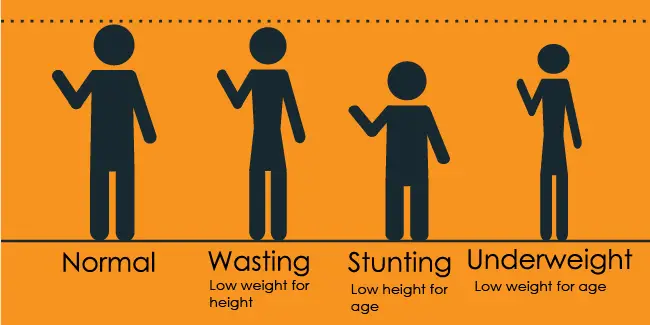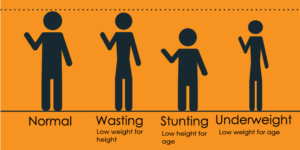
What is Malnutrition ?
What is malnutrition: It is an abnormal condition that occurs due to insufficient nutrition. This imbalance is most frequently associated with poor nutrition, but it can also be due to excessive nutritional intake. It increases the risk of getting infections or developing infectious diseases.

Long-term malnutrition may lead to starvation and death. Because of the lack of sufficient nutrients to maintain healthy body functions, malnutrition often occurs in economically backward developing countries. However, it is caused by an inappropriate or inadequate diet. It debilitates both the body and the mind.
Africa is one of the known regions for malnutrition in children, one in three children in Africa is a victim of malnutrition. Due to this reason African government has launched many programs as SASSA to aid children with good nutrition by providing the guardians of children with monthly food bags that contains all the necessary nutrients a child need to grow properly.
As malnutrition affects the brain of children, that’s why if you compare the analytical abilities of a child from Africa to a child from the USA, the African child will always have fewer abilities because of malnutrition stunts the growth of the brain.
What is malnutrition in children?
What is malnutrition in children? A child suffering from it not only had a sufficient amount of food but also what he has eaten did not have the necessary nutrients for his development. It has a devastating impact on the lives of children in the short and long term.
The severe food shortages can lead to a disease of children called marasmus, characterized by slender body and growth retardation. Since it multiplies the chances of suffering from diseases such as pneumonia, diarrhea, or malaria. So. it is one of the worst enemies of child survival.
Types of malnutrition
There are two types of malnutrition.
- Malnutrition by excess: It is the consequence of an excessive imbalance between energy intake and calories consumed. It can derive from genetic or environmental causes (too abundant nutrition).
- Malnutrition by default: In poor countries, it is the prolonged consequence of nutrition defects over time, i.e. a decrease in the intake or absorption of proteins, minerals, vitamins, or calories.
What are the causes and symptoms of malnutrition?
Causes:
- The main and most common cause is the lack of food intake. It leads to the body spending more energy than the food it consumes.
- Bad eating habits. Such as irregular diet, partial eclipse, ruminating habits, or nerve vomiting.
- Mental health problems: anorexia or bulimia.
- Disease factors. Diseases affect appetite, hinder the digestion, absorption, and utilization of food, and increase the consumption of the body.
- Mobility problems: difficulty in getting food or cooking it for yourself.
- Dieting to lose weight can also lead to malnutrition.
Symptoms
The main symptoms are as follows:
- Significant weight loss
- Poor weight gain
- Loss of muscle mass
- anemia
- Weakened and brittle hair and nails
- constipation
- Prolonged diarrhea
However, in extreme cases, hypotension, hypothermia, and bradycardia may be present.
What is Undernutrition?
Undernutrition is also a form of malnutrition, but the thing here to understand is that mal-nutrition is a broad term that possesses both terms overnutrition and undernutrition which means it refers to both obese and underweight people. Undernutrition is a subterm that only relates to underweight.